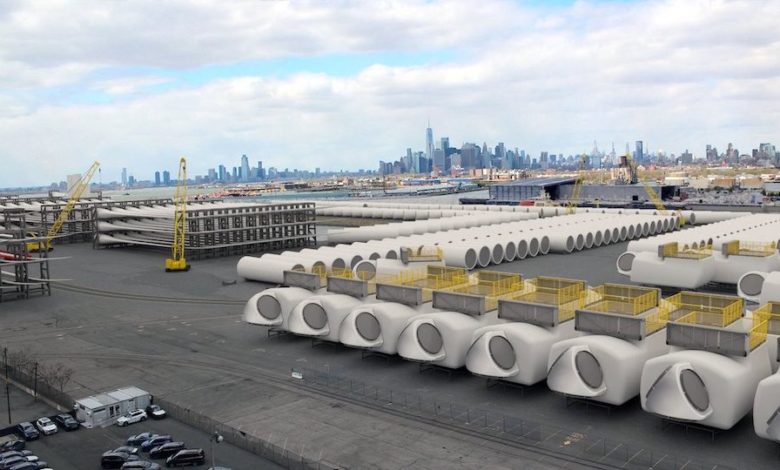NY City’s South Brooklyn Marine Terminal to be transformed into offshore wind hub

The city-owned South Brooklyn Marine Terminal (SBMT) in New York City is to be transformed into an offshore wind port facility, serving as a hub to support the Empire Wind and Beacon Wind projects being developed by partners Equinor and BP.
As part of the deal finalised by the New York City Economic Development Corporation (NYCEDC), Equinor, BP and Sustainable South Brooklyn Marine Terminal, L.P. (SSBMT) will upgrade and build out the terminal as an operations and maintenance base. The terminal will become a power interconnection site for Empire Wind 1, and heavy lift platforms will be built on the 39th Street Pier for wind turbine staging and installation for Equinor and other developers.
In 2018, NYCEDC selected SSBMT – in a partnership between Industry City and Red Hook Terminals – as the leaseholder to reactivate the South Brooklyn Marine Terminal so that it can create a 21st-century maritime shipping hub with an on-site facility to train local talent. Under this agreement, SSBMT is entering into a sublease with Equinor and BP until 2054 for its operations and maintenance base, and its onshore substation. Under the same agreement, Equinor and BP will have a 10-year term for turbine staging and installation activities with an option to extend the 10-year term for up to six additional years.
In fall 2021, NYCEDC announced a 15-year Offshore Wind Vision Plan to make New York City a leading destination for the industry by developing best-in-class infrastructure to support the construction and operation of offshore wind farms in the New York Bight, including infrastructure to support manufacturing, staging and installation, operations and maintenance, and transmission. The city’s $191m investment in offshore wind projects puts it on a path to reduce 34.5m tons of CO2, as well as meet its goals of 100% clean electricity by 2040 and carbon neutrality by 2050.
